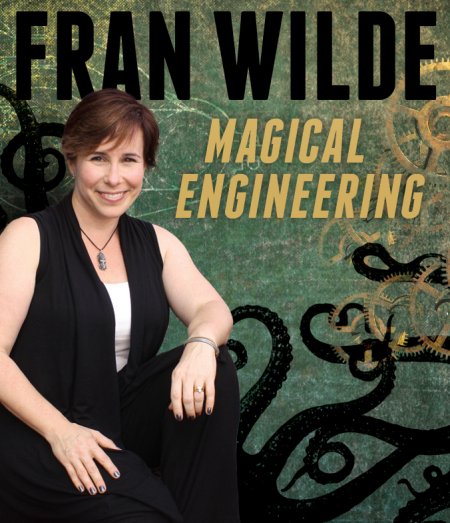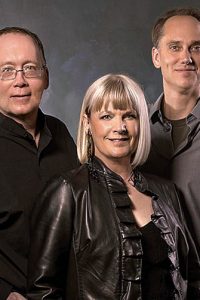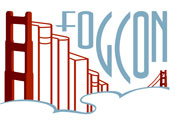Fran Wilde: Magical Engineering

Frances Ellen Wilde was born in 1972 in Philadelphia PA and spent many childhood summers traveling back and forth from Philadelphia to Hopkinsville KY. She studied art in high school and learned to design jewelry. At the University of Virginia she studied writing and literature, with an emphasis on poetry, graduating with an English degree focused on Milton and 18th-century literature. She received an MFA in Poetry from Warren Wilson College, and later earned another master’s degree in Information Architecture and Interaction Design. She has worked as a sailing instructor, programmer, teacher, proofreader and copywriter, editor, jeweler’s assistant, web designer, and technology consultant, among other occupations.
A published poet since the late ‘90s, Wilde’s first publication of genre interest was story ‘‘Everlasting’’ (2011) in Daily Science Fiction, and she has published more than a dozen stories since then, with appearances in Asimov’s, Nature, Beneath Ceaseless Skies, Tor.com, and anthologies and small-press magazines. Debut novel Updraft, a fantasy set in a city of living bone above the clouds, appeared last year, with companion novels Cloudbound and Horizon (working title) forthcoming. Story ‘‘The Topaz Marquis’’ (2014) introduced her Gem Universe series, which will continue with novella The Jewel and Her Lapidary from Tor.com. Her ongoing series of interviews with other authors, Cooking the Books, explores the intersection of food and fiction at franwilde.wordpress.com/cooking-the-books.
Wilde is a graduate of Viable Paradise (2011) and attended Taos Toolbox (2012). She lives in Philadelphia with her family.
Excerpts from the interview:
‘‘When I was very young, I learned to read at the knees of some amazing storytellers. The tradition in both my mother’s and father’s families is to sit there and tell yarns. If you sit me next to Andy Duncan, my voice will start to twang – it’s unconscious. If you’re from the northern US, and all of your cousins on your mother’s side are in the southern US, you might develop adaptive coloring very quickly. I did. I also spent a lot of time in libraries, reading, and I began to read and write very early. I was very serious about my diaries, too. Most of the time I camped out in the Tredyfrin-Easttown Public Library, which was a wonderful place with reading nooks. I read everything. I’d just go hide in the stories. Pretty soon, I realized that the books in the library were fantastic, but there was a bookstore near me that had even more: they had a great genre section. When they figured out I didn’t have as much access to science fiction as I had to fantasy, they started loaning me science fiction ARCs.
‘‘They gave me a lot of things. I read Jack Chalker and Orson Scott Card. I read stuff that wouldn’t have come into the house otherwise. It was an extraordinary education. I came from a household that prided itself on classics and hardbounds and things you were supposed to read, a lot of engineering texts, and a lot of non-fiction. I was lucky in that way, but I had to go find the science fiction on my own. I loved that stuff.”
…
‘‘I got into games programming because I was doing a lot of academic research on how games can be used to teach kids different things. I came out to San Francisco and was talking to a couple different companies because I knew enough languages by then, and I knew how to do database integration and dynamic websites and animation. This was before the dot-com meltdown, and people would get bonuses just for bringing someone like me in. It was very heady. I was staying on a couch at a friend’s during one of these things in San Francisco. He had a copy of Snow Crash. I read it in an hour and a half, and then got all of the other Stephenson I could. I just loaded up on cyberpunk. I had read The Diamond Age during my master’s and I loved it, but I wanted the heavier stuff, the coder stuff. I’d read Neuromancer but I hadn’t read Burning Chrome. I went out and got all of this stuff and just soaked it in. Pat Cadigan’s Synners. This was where I lived. Candas Jane Dorsey wrote a story, it was in the Penguin Book of Modern Fantasy By Women (which is rather incorrectly labeled because science fiction is all throughout this book, but: women, therefore, fantasy, I guess?). Dorsey wrote this story called ‘(Learning About) Machine Sex’. When I was working in the programming industry, I passed it around. It percolated through a lot of the women programmers I knew, though there were very few of us. Just reading that story gave me a feeling like, ‘I can stay in this industry a bit longer and not strangle someone.’”
…
‘‘I originally pitched Updraft as YA, but I did some work in the book that wasn’t standard YA. There’s no love triangle, true, but that is not a definition of YA – there are YA stories that are excellent that don’t have that. I had a choice of which viewpoint character to write, because there are layers of generations in the story. I chose Kirit as the point of view character because I could hear her voice the loudest. The narrator could just have easily been Nat. It could have been so many people. If it had been Nat, it wouldn’t have necessarily been pitched as YA. He and Kirit are the same age, but a 17-year-old male on an epic adventure is not always considered YA. I wanted to write a female version of that story, and Kirit wanted to be the protagonist. So when Updraft ended up as a crossover title, I was happy, even though crossover is a tough place to be sometimes.”
…
‘‘I realized that I was a worldbuilder, and that my game experience, all of the things I’d been doing with my life, all of the art background, the animation, the visual stuff – I could draw on that and build a world. I’m hoping that at different points in somebody’s life – young adult through adult – they can come back to Updraft and say, ‘There’s more here,’ and that an adult can read it and say, ‘That was really fun.’ Saying that about a dialectical examination of politics and socioeconomic stuff? That’s kind of cool. There’s a lot about consequences and compromises and gray areas. That’s something that some people learn, for better or worse, when they’re very young. There’s a lot about family in the book: the family you make, but also the family you’re born with. Having those layers of family can complicate a story. I really wanted that.
‘‘I wrote a lot of engineering into the book, because that’s what I know. Some people say, ‘There’s no magic in this book. It’s all engineering.’ I say, ‘There’s magic in this book. It’s all engineering.’ At the end of the day, if you ask me to describe a bridge, or a schematic for a pump, I can do it. I was a science writer at the Whiting School of Engineering at Johns Hopkins for years. They were one of my main clients because I could translate big engineering principles into simple language. That’s where I learned the rule that if you’re introducing an entirely new idea, or a new world, you go for simple language instead of the more difficult language. It’s a lower barrier for entry. Still, there are linguistic effects in Updraft, very carefully built in. In Updraft, instead of ‘passing things down’ to your offspring, you pass up, because the whole city goes up. I had to flip the prepositions all over the place. Doing that with simple language made the world more accessible.”
…
‘‘Coming up next is Cloudbound, the companion novel to Updraft. Kirit is still present, but this is Nat’s book. And you meet or re-meet a lot of other characters. Updraft was a horizontal narrative: it operated above the clouds with an occasional unlucky dive. All I can say about Cloudbound is that it’s a vertical story. I had a lot of fun giving my characters nitrogen narcosis and the bends at the same time. I loved writing this book. All those people who’ve been asking for more history and more understanding of what the bone towers do, and the cloud dynamics – that all became really paramount in this one. I did a lot of research on cloud dynamics, and on other things, like reverse-altitude-sickness issues. I ended up talking with consultants at NOAA and elsewhere about exoplanet weather and solar and thermal structures as well. All of that needs to stack up to make a world work. And I’m a third of the way through Horizon, which is the working title for the third book, and which is also very different. There are new point-of-view characters as well as Kirit and Nat, because there are more experiences here. The current ending of Cloudbound ends a little more abruptly than Updraft does. It answers the dominant question of ‘What the heck is down there?’, so I felt OK attaching a ‘Holy heck what do we do now?’ to it as well.”
Read the complete interview in the March 2016 issue of Locus Magazine. Interview design by Francesca Myman.






